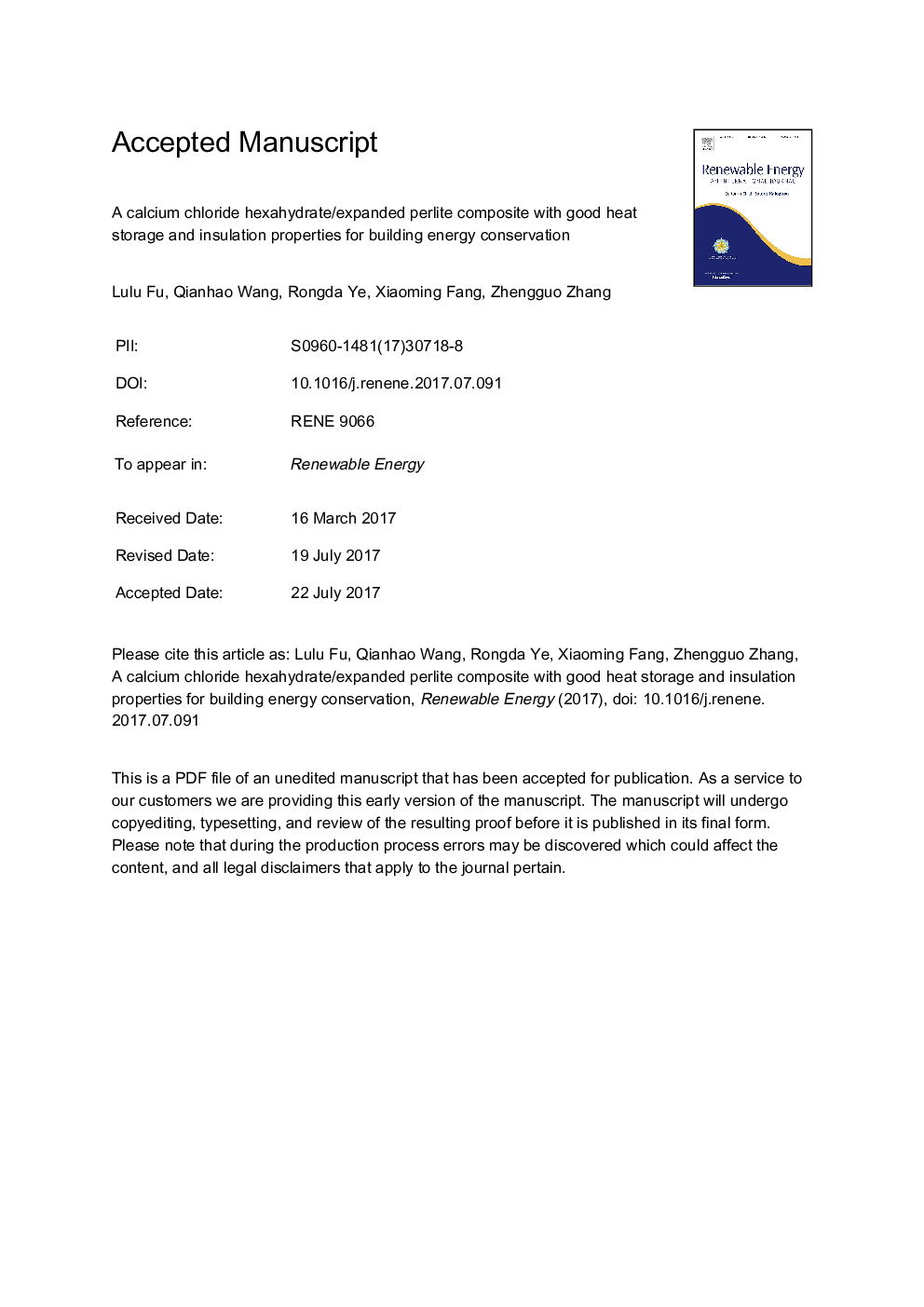| Article ID | Journal | Published Year | Pages | File Type |
|---|---|---|---|---|
| 4926192 | Renewable Energy | 2017 | 34 Pages |
Abstract
A porous supporting matrix, expanded perlite (EP) is composited with a salt hydrate mixture of CaCl2·6H2O and SrCl2·6H2O (98:2 in mass ratio), to develop a nonflammable thermal storage material for building use. The salt hydrate is uniformly adsorbed on sheets of EP, and a maximum absorption capacity test shows EP can contain as high as 55 wt% the salt hydrate and keep the stable form. It is shown that the melting temperature of the composite PCM is 27.38 °C, close to that of CaCl2·6H2O, and its latent heat is 87.44 J/g, equivalent to the calculated value based on the mass fraction of CaCl2·6H2O in the composite. EP further reduces the salt hydrate thermal conductivity by over 70% to enhance its thermal insulation, and suppresses the supercooling. A 1000 heating-cooling cycles test verifies the CaCl2·6H2O/EP composite possesses good thermal reliability. The CaCl2·6H2O/EP composite is then fabricated into a board for replacing the foam board employed as the core in a commercial foam insulating brick to obtain a PCM brick. It is found that, when applied as the roof of a test room, the PCM brick has the function of decreasing the indoor peak temperature and causing the hysteresis in the indoor temperature rise, compared with the foam insulation brick. The nonflammability along with good thermal storage and insulation properties makes the CaCl2·6H2O/EP composite PCM show great promises for use in building energy conservation.
Keywords
Related Topics
Physical Sciences and Engineering
Energy
Renewable Energy, Sustainability and the Environment
Authors
Lulu Fu, Qianhao Wang, Rongda Ye, Xiaoming Fang, Zhengguo Zhang,
